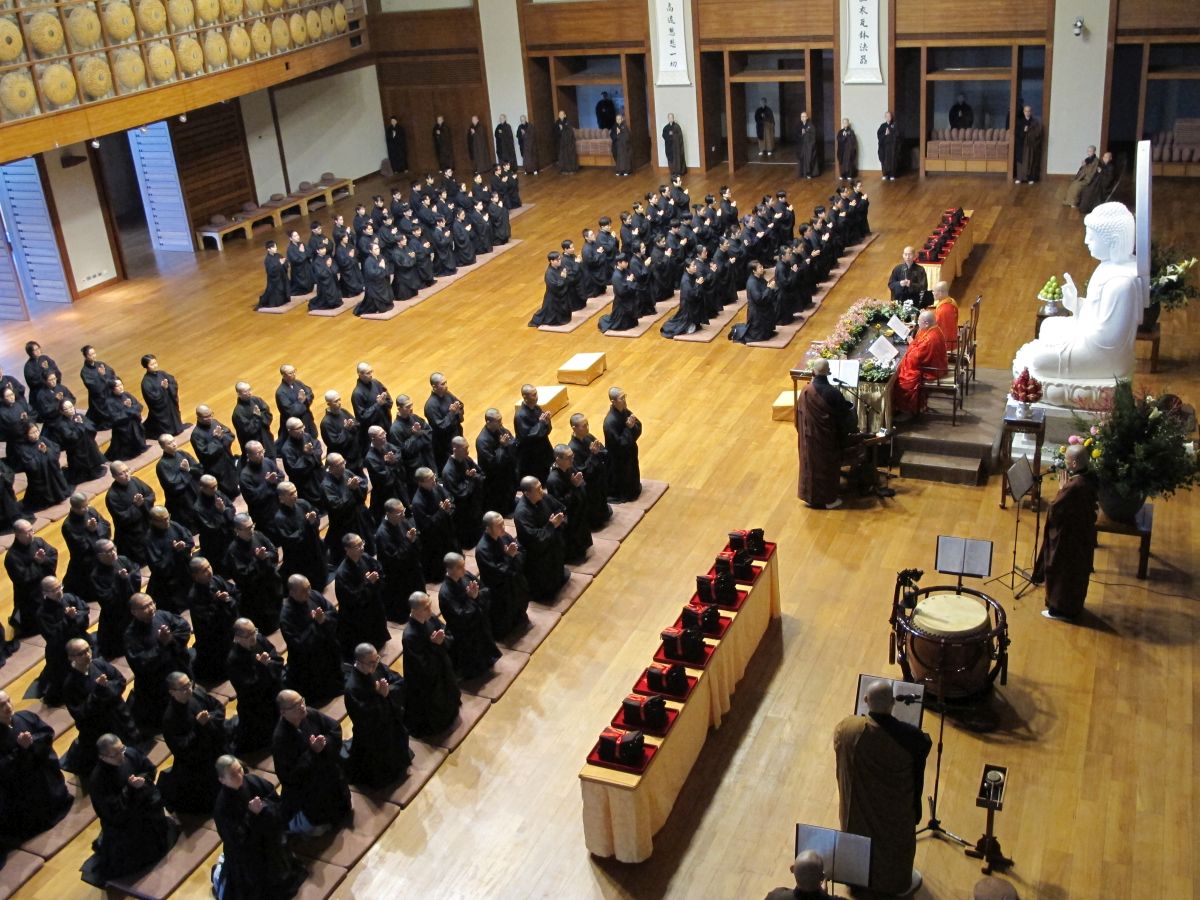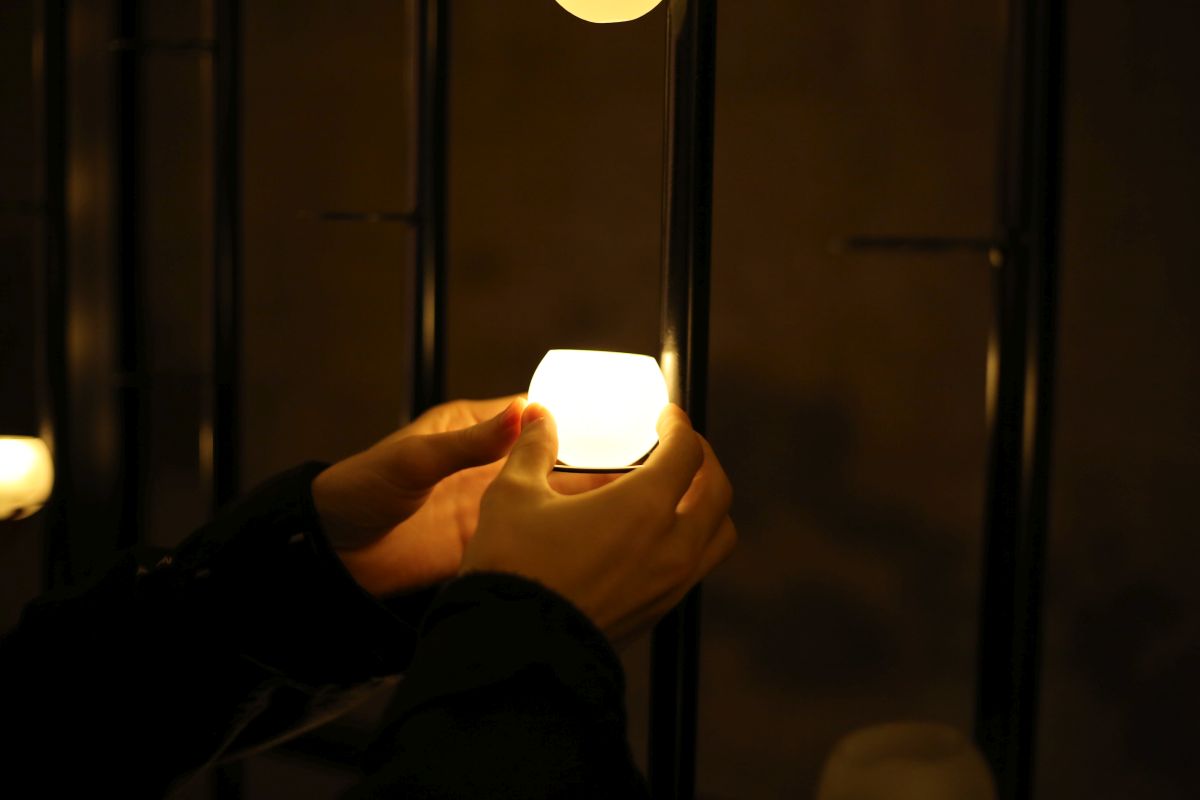Special Topics
Q3: What are the Ways to Make a Vow?
Vows can be made anytime, anywhere, as long as a kind thought arises in our mind, and there is no need to follow certain rituals or steps. However the vow will not last long if it is just the result of an impulsive thought or casual talk. Rather, a vow made during our participation in Dharma assemblies or in front of the Buddha statue can help us generate an inner power that corresponds with the outward vow. Even if we encounter setbacks in the future, we will naturally have the confidence and courage to overcome challenges and difficulties. Therefore, we can make vows in the following ways: 1. Worshipping and making vows before the Buddha: Whether in temples or before our home altars, we can follow the sequence of making offerings, performing prostrations, and making vows. Objects of offering include incense, lamps, purified water, fresh flowers, and seasonal fruits. It is fine if you don’t prepare any offering items at all, but most important is to make a vow with utmost sincerity. The ceremony of offering or worship is meant to demonstrate our earnest and serious attitude towards our vow, through our respect and reverence to the Buddha and Bodhisattva.
1. Worshipping and making vows before the Buddha: Whether in temples or before our home altars, we can follow the sequence of making offerings, performing prostrations, and making vows. Objects of offering include incense, lamps, purified water, fresh flowers, and seasonal fruits. It is fine if you don’t prepare any offering items at all, but most important is to make a vow with utmost sincerity. The ceremony of offering or worship is meant to demonstrate our earnest and serious attitude towards our vow, through our respect and reverence to the Buddha and Bodhisattva. 2. Making a vow while engaged in a practice activity: When participating in practice activities, you can make a vow prior to engaging in the practice to set its purpose. An example would be praying for a sick relative or friend by making a vow to recite the Bhaiṣajyaguru-vaiḍūrya-prabhārāja Sūtra-- commonly called the Medicine Buddha Sutra-- for 49 consecutive days. You can also make a vow to transfer the merit for whatever you wish to fulfill upon completing your practice session. Practice activities include personal regular practice, such as morning and evening chanting, dharani/mantra recitation, and Buddha-name recitation; or intensive group practice, such as the seven-day Amitabha Chanting Retreat, the seven-day Chan Retreat, the Ksitigarbha Bodhisattva Dharma Service, the Medicine Buddha Sutra Recitation Dharma assembly. A practice activity or event typically closes with a ritual to make vows and transfer the merit. Therefore, after making the common vow, you can also kneel in front of the Buddha and pray silently to make specific personal vows.
 3. Lighting up lamps and praying: Lighting up lamps is the most recognizable way for Buddhists to engage in prayer. Especially during the New Year, many temples will hold lamp lighting and lamp offering ceremonies to help the public to settle their body and mind through the acts of kneeling and worshipping before the Buddha, while initiating the Bodhi vow to benefit others.
3. Lighting up lamps and praying: Lighting up lamps is the most recognizable way for Buddhists to engage in prayer. Especially during the New Year, many temples will hold lamp lighting and lamp offering ceremonies to help the public to settle their body and mind through the acts of kneeling and worshipping before the Buddha, while initiating the Bodhi vow to benefit others.There may be different forms of making vows; however, they mainly consist in rituals such as burning incense, making offerings, and performing prostration before the Buddha statue. These rituals serve to calm and concentrate our body and mind, thereby helping to foster a sincere and earnest mind to deepen our vows and thus encourage us to advance in practice. However, bowing to the Buddha and lighting up lamps are only symbolic, and all vows require our continuous practice to be fulfilled.
Extended Reading:
Vows: the Blueprint for Happiness
Q1: In order to make vows, do we need to follow any sequential steps?
Q2: What are the differences between ordinary people making a wish and Buddhists making a vow?
Q3: What are the Ways to Make a Vow?
Q4: Is it necessary to fulfill a vow after making it?
Q5: Is making vows the same as taking oaths?
Q6: How to avoid making empty vows?
Resource: Issue 330 of Humanity Magazine, Dharma Drum Publishing Corporation
Translation: 可馨
Editing: Keith Brown, Chiacheng Chang (張家誠)
